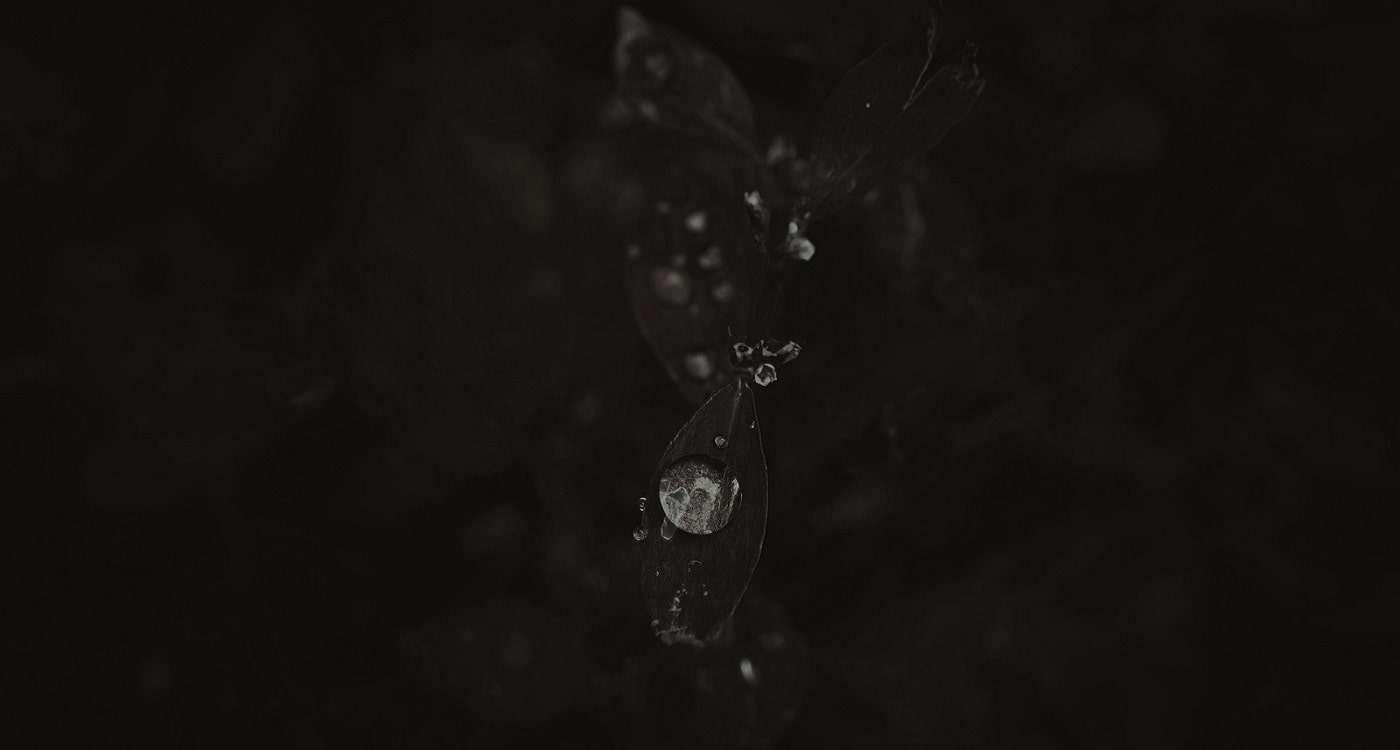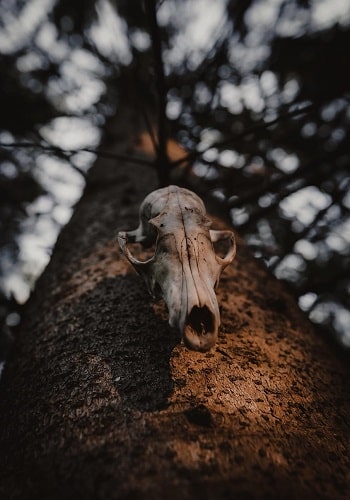Dark and gloomy is Lovenoma before the heat of the coming summer begins to make working inside intolerable. I wasn't going to change the CSS too much, but then, as always, I had to just go all in or not at all. But it worked to nourish my motivation for the coming months, so that's good. I think.
This Summer Camp won't be my first, however I have been quite private and even protective about my worldbuilding until only last year. That has been changing (if extremely slowly), and I hope to keep on this path for the coming summer and beyond.
Week One: Nourishment
Lovenoma has, in general, two rules which apply to a cosmic or universal level: "Something cannot come from nothing" and "All that lives needs energy". And since energy cannot come from nothing, all that lives must thus consume something in order to survive. Whether that is flora or fauna or something more abstract is both secondary to the main point and quite interesting to ponder about.
Nourishment & Consumption
In a world where nothing lives without consuming something, food is a necessity for everyone. That gives it power, or at least whoever controls it.
Food—that is, vegetables, roots, berries, grain, meat, and so on—are important for both humans and animals. But the necessity to consume also applies to plants, who thrive when the ground contains nutrients such as those left by dead fauna and humans alike.
Famine & Starvation
One of the best ways to spur conflict among every living thing is to take away that which they need to survive. Similarly, in times of conflict access to food may become difficult and plain impossible, further fueling strife and desperation.
Lovenoma has, geographically, plenty of dry regions where food might be hard to come by—as well as places where overabundance of food and life might turn out to be a curse in disguise.
Focus for the Future
Tenwä has a lot of growing to do before it'll be ready to move away from the First Age, so that will be the focus for July.
The front page could use a (re-)write as well, now that there is more to the world at large.
Spring Cleaning
This has, in truth, been going on for a while. However, now with the new look I have completely cleaned up all of the outdated content, whether that meant turning them back into drafts until I can rewrite them, or simply deleting them.
Week Two: Roots
Oh, this is perfect for Tenwä and its people (they quite literally refer to their family tree and ancestral ties as tiriŋwäji, or bloodroots). These connections of bloodlines are a very real part of them and allow them to worship and be aided by their ancestors, as well as allowing for the departed souls to return to that same clan again in their next life. But beyond that, there are a few other things this theme could apply to in Lovenoma.
Roots of Life
Putting aside the cosmic roots, hearts of world and magic and mysteries of the universe, Lovenoma's people also have roots of their own. Their languages, cultures, traditions and everything is passed down from one generation to the next, each one adding a little bit of themselves into the mix before passing those things on again.
Origin of life, flora and fauna is something I'll likely leave to myths and legends, so I hope that will be a prompt to explore. The entirety of the First Age itself really is just plowing the field and sowing seeds, essentially creating and nursing the roots of later ages.
Roots of Lovenoma
There is plenty of space for myths and legends about the world as it was before the arrival of humans, and so many fragments leftover from the events of those times. The roots and origin of humans, for example, is something I have yet to really write about.
And of course there is the entirety of Lowï, the realm below of the waking world and the source (root?) of magic which I have not written anything about despite its real world (mythological) counterpart being in the very name of the world.
Homepage
Well, I was just going to let the homepage be unless I ran out of everything else to do, but since we're here...
Personally, I'm partial to the mystery of an empty crossroad with not a faintest idea which way is home, but even I have to admit a single sentence is hardly enough to paint a picture of the world, so I'll probably throw some ideas to the wall later and see if something sticks.
And even if all I manage is to make things worse, it'll still be nice to have a bit of a change in scenery as I procrastinate, staring at the front page with an empty mind.
Early Days of Worldbuilding
I faintly remember making a map (or a few) and imagining countries and people and battlefields and dragons, and heroes fighting villains in legendary battles of good and evil. Very dramatic, but generic fantasy and not very interesting long-term.
It was worldbuilding that first introduced me to conlanging, sometime after I named Lovenoma. I wanted a language resembling finnish which wasn't actually finnish. I leaped into the rabbit hole of creative language-making and have yet to crawl out. Before I created languages so I could worldbuild, but now I find I worldbuild so I can create languages.
Week Three: Metamorphosis
"Change of form or structure, action or process of changing in form", apparently originally by magical means. In modern times the term is mostly applied to the process of individual animals going through some relatively drastic change in their body structure.
Not quite as all-encompassing as last year's Change, but that almost makes it more interesting. It's not really about evolution of a thing by way of small mutations over millions of years, but a more drastic, short-term transformation of a singular thing. And in worldbuilding, that can still mean just about anything.
Nolǐur & Udzar
In the early days of Tenwä, the exiled Nolǐur migrated to Udzar and faced challenges previously unheard and unimagined by the people. They survived and adapted to that new environment thanks to the very magic which got them exiled in the first place by developing ways to combat the cold and forcefully grow food out of the ground.
The land, too, might adapt to its people in this case particularly, as the Nolǐur's ruler holds power over the land of Udzar itself as well as her people.
An End & A Beginning
Last summer I wrote, for the first time, how the First Age came to an end by a quasi-apocalypse, caused by a single individual of questionable sanity. Back then it was just a throwaway idea, a thought experiment more than anything so that I would have something to write about. But now it's difficult to imagine the Second Age beginning in any other way, so this time around I'd like to write some meat over that fragile skeleton.
Week Four: Tomorrow
Well, tomorrow comes, and we continue. Over the past month I've thought about the specific time period I should focus on during next month's challenge, but this about settles that it's going to be a bit of a revision of the end of the First Age. Last year I came up with the concept, but this year I want to give it the weight and depth it deserves.
Out With The Old
After the Day of Tremors weather and climate began to change, sometimes in unpredictable ways such as a snow storm in the midst of summer heat, or flowers blooming in the dark of a winter's night. It would certainly create some sense of uncertainty, even fear toward the future:
"Is this all it's going to be? Will things change further? Can we adapt? What if we can't?"
What actually happens might turn out to be more anticlimactic, but I would think the possibilities imagined by Tenwän people would cover a wild range of nightmares and disasters. Certainly it would be easy to think things are never going to get better, only worsen or stay the same.
In With The New
Both the eastern Astuorë and the coastal Allorï have access to ships, though the Allorï may have a more difficult time sailing through open ocean. The Astuorë might end up in the eastern Ēwie, or at least some coastal regions and archipelagoes. If those are inhabited, it might be quite the shock for both sides, again rising questions of "what now?"
Trade and cooperation might be a possibility, but in the end the Astuorë are running for their lives and have no other places to go to if someone were to try and force them to leave—something they would be thinking about as well.
Divination & Tomorrow
In a world where the ability to see beyond the present moment exists, the future might seem predictable. But with the way that particular ability works (along with all magic in Lovenoma, actually), it might just become as questionable and unpredictable as the shifting weather after the tremors. And if even the greatest or seers, sages and diviners can no longer see into the future, they might reasonably think it's because there is nothing to see.
Thankfully that's not true, and there are plenty of people in Tenwä who will continue forward regardless of what the future promises, planning for days to come until they cannot. But I can see a situation where the ability to predict the future might, in fact, lead to more fear and panic—not less.








Good luck on your participation in the challenge ! I love that you explore food as a mean of power, and starvation as a material of conflict, it's very promising !
Thank you! These first themes have really done wonders to get the inspiration flowing for the summer ahead